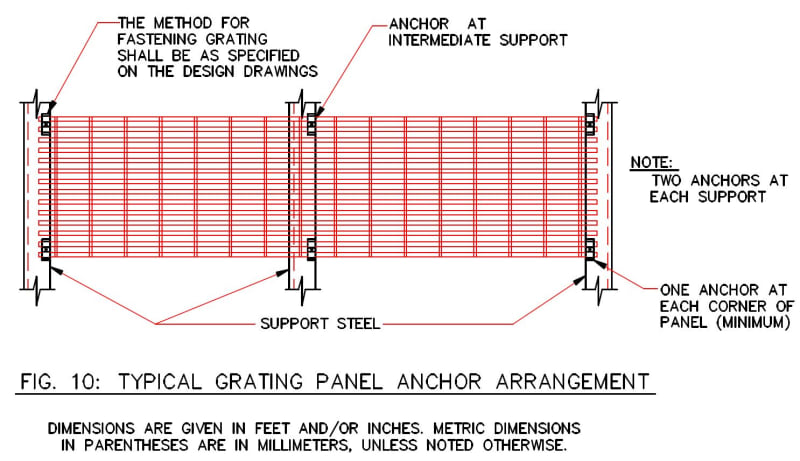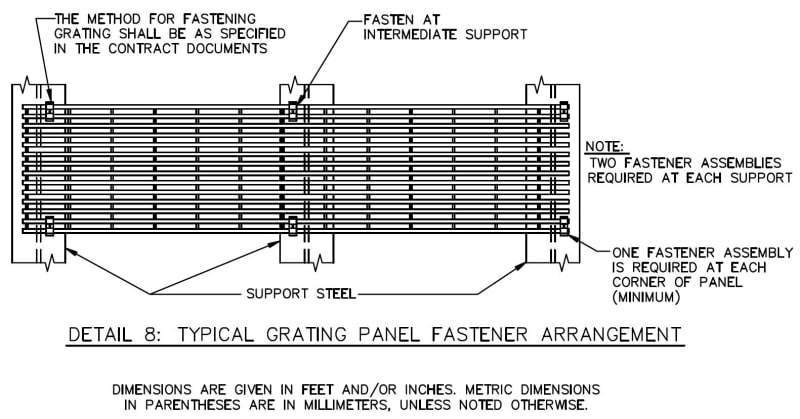oengineer
Structural
- Apr 25, 2011
- 731
I am working on an platform structure & I was initially looking to use a steel channel section as an intermediate support member for Grating (see image below):

The image above is from PIP STF05530 Grating Details, dated March 2001.
I have seen the use of channels as intermediate supports for grating on some old plans for access platforms structures.
But after looking in the latest PIP STE05530 Grating Design Guide (dated October 2007), I noticed that it states the following:

Then I noticed that the PIP STF05530 Grating Fabrication Details (COMPLETE REVISION), dated November 2006, shows an updated image for intermediate grating support framing. See image below:

It appears that the intermediate supporting member is now a Wide Flange beam instead of a channel section.
Is it not appropriate to use a channel section as an intermediate support for grating? I have seen it on some old platform plans. I feel like the use of Wide flange members would be excessive if the load & span is not that great/large, but I do not want to deviate from acceptable structural practices. Also, I would think channels in this situation would be more economical as long as the width of the channel flange is long enough to support the grating & grating clip (PIP states that the grating should have a 1 inch min. bearing on supporting steel).
Suggestions/comments are appreciated.

The image above is from PIP STF05530 Grating Details, dated March 2001.
I have seen the use of channels as intermediate supports for grating on some old plans for access platforms structures.
But after looking in the latest PIP STE05530 Grating Design Guide (dated October 2007), I noticed that it states the following:

Then I noticed that the PIP STF05530 Grating Fabrication Details (COMPLETE REVISION), dated November 2006, shows an updated image for intermediate grating support framing. See image below:

It appears that the intermediate supporting member is now a Wide Flange beam instead of a channel section.
Is it not appropriate to use a channel section as an intermediate support for grating? I have seen it on some old platform plans. I feel like the use of Wide flange members would be excessive if the load & span is not that great/large, but I do not want to deviate from acceptable structural practices. Also, I would think channels in this situation would be more economical as long as the width of the channel flange is long enough to support the grating & grating clip (PIP states that the grating should have a 1 inch min. bearing on supporting steel).
Suggestions/comments are appreciated.
